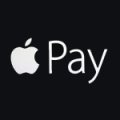If you’re thinking about jumping into the world of Apply Pay, don’t take that brand-new leather wallet off your holiday shopping  list just yet. While Apple’s new service is very cool, very easy-to-use, and very secure, it still has a way to go before it can be found in enough places for you to leave your wallet at home.
list just yet. While Apple’s new service is very cool, very easy-to-use, and very secure, it still has a way to go before it can be found in enough places for you to leave your wallet at home.
Apply Pay Basics – What it is and What it Does
If you have an iPhone 6, you have access to Apple Pay. It’s a free service that allows you to store your personal credit card info in your phone and then buy things using your credit card’s data – and not the actual credit card.
There’s no app to open, no worries about pre-loading with funds and no pin or password to remember as is the case with others who have tried to accomplish what Apple has done (PayPal and Google Wallet to name two). You just swipe your phone above a compatible POS system and you’re done.
Keep in mind that Apple Pay has not been on the market long. As brands see that it’s making life easy for their customers, there will be continued adoption until using your phone to pay for things becomes as ubiquitous as reaching for your wallet and pulling out a card. However, some retailers (for example CVS and Walmart) already have investments in other cardless technologies and will not be accepting Apple Pay.
Setting up Apple Pay on Your iPhone
Apple has made it incredibly easy (in true Apple style) to set up Apple Pay on your iPhone 6. Simply open your Passbook app, tap the plus sign and follow the prompts to add as many cards as you want. To make it even easier, you can take a photo of your card’s front side and let your phone figure out the number and expiration date (you can make any corrections if your number isn’t ready clearly) and then enter the security code on the back of your card (this cannot be entered by taking a photo). The service works with just about every major credit card on the market.
To use your Apple Pay feature, look for a POS system that displays the contactless payment logo – it looks like a Wi-Fi symbol with a hand making a swiping motion, or the Apple Pay logo. There’s no need to tap your phone to the machine or swipe it. Simply placing your phone near the machine will initiate the transaction.
When your phone is close enough, your credit card’s image will pop up on your screen (even if your phone is asleep). Simply press your thumb on the screen to verify that you are actually the person initiating the transaction and you’re good to go.
Apple Pay Security – Strong and Manageable
If you lose your phone, or if it’s stolen, anyone who ends up with your phone will be unable to make purchases thanks to the thumbprint requirement. And, because Apple Pay is tied to traditional credit cards, you won’t be liable for any purchases you didn’t make. Some banks are increasing security by forcing you to call a hotline when you’ve added their card to your phone – which only needs to be done once. Also, if you do lose your phone, you can turn off Apple Pay payments through Apple’s “Find my iPhone” website.
Apple Pay is accepted at over 200,000 locations across the U.S. This may seem like a large number, but it’s really not. However, as more national chains (Macy’s, Walgreens and Nike already accept it) come on-board, we’ll see that number rise dramatically. But for now, hang onto your wallet – or, leave it in the car when you know you’re going to be able to use Apple Pay to make your purchases. Apple Pay won’t totally replace your wallet – not yet, anyway. Until it works as a loyalty card, stores receipts and work on other systems like public transportation, it remains another, albeit really cool, way to pay for the things you want to buy.
